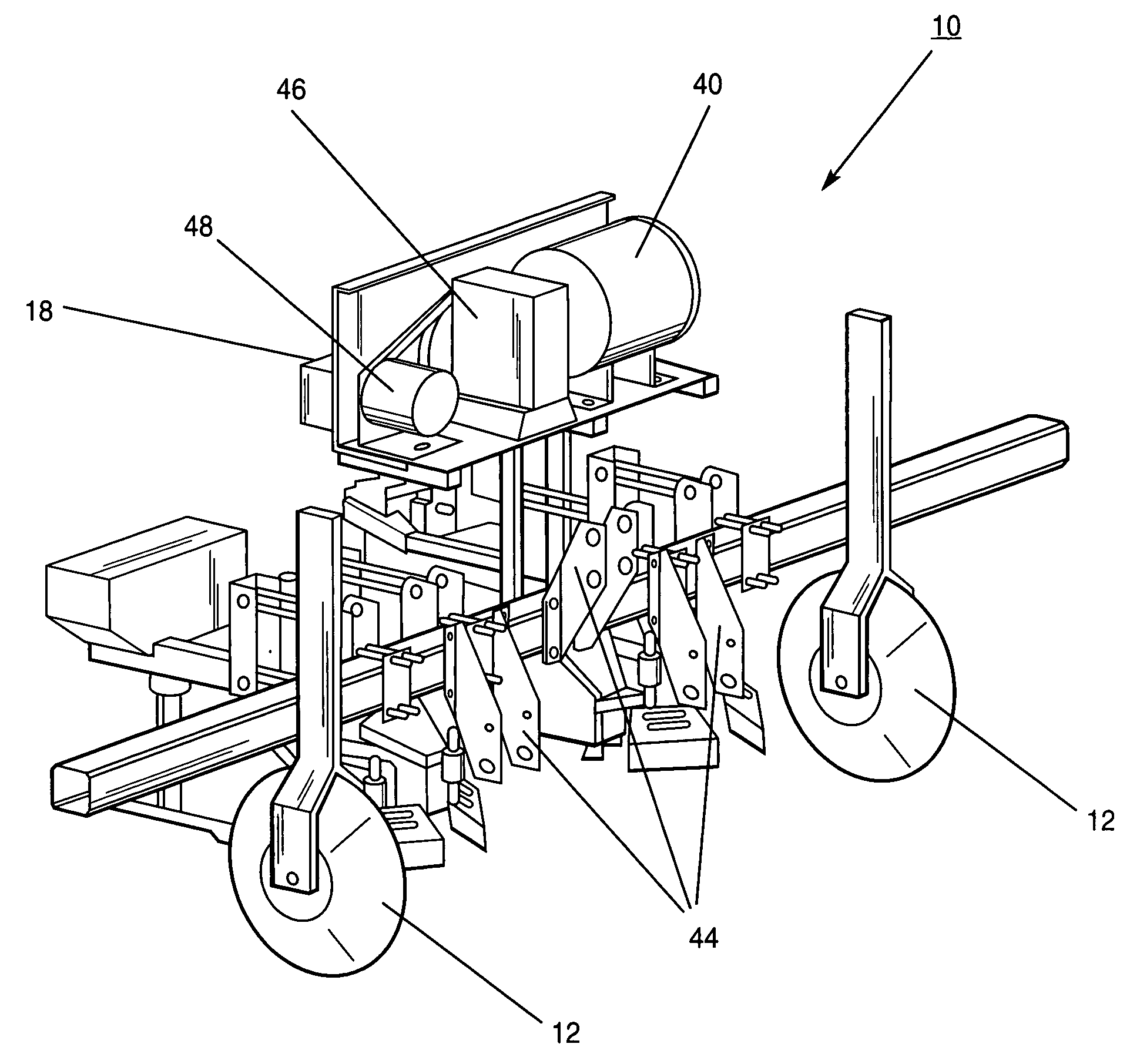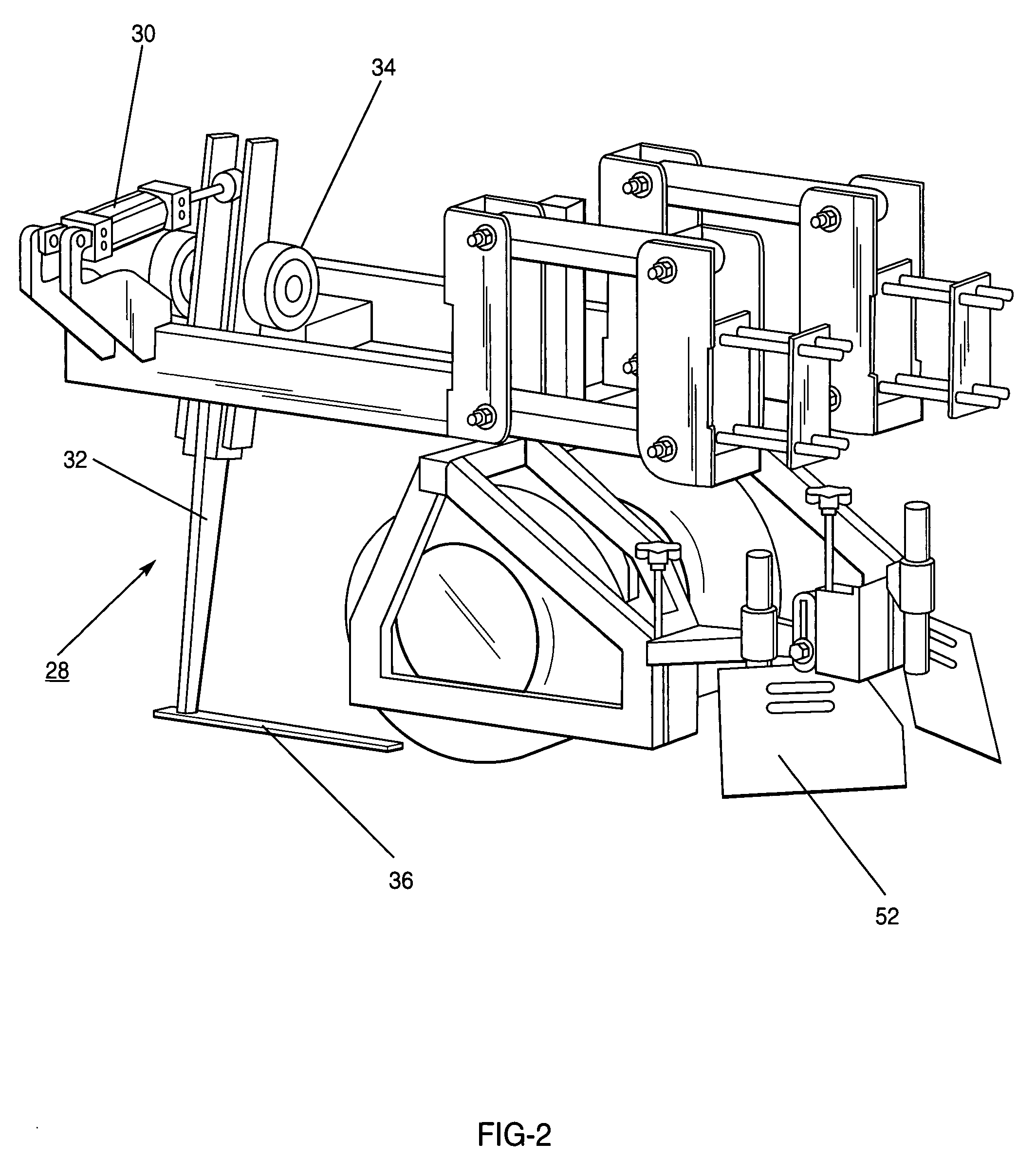Crop thinning apparatus and method
a technology for thinning crops and equipment, applied in the direction of thinning machines, agriculture tools and machines, adjusting devices, etc., can solve the problems of increasing the cost of crop production, increasing the cost of hand thinning, and making it difficult for farmers to compete with foreign growers with low labor costs
- Summary
- Abstract
- Description
- Claims
- Application Information
AI Technical Summary
Benefits of technology
Problems solved by technology
Method used
Image
Examples
example 1
Clipped Chile Re-growth Test
[0066]A test was conducted at a research farm where three plots of different varieties of red chile peppers were clipped at different sections. The three different variety plots were labeled as B-58, B-18 and Sonora. Each of the three varieties were cut by hand to determine where the invention should cut the plants at three different times (repetitions 1, 2, and 3 with each repetition consisting of 10 chile plants). Repetition 1 was performed when the chile plants were cut below the cotyledons. (The cotyledons are the first seed leaves that break out of the soil. The next leaves to appear after these are the first true leaves, followed by the second true leaves.) Repetition 2 was performed wherein the chiles were cut below the first true leaves. Repetition 3 was performed wherein the chilies which were cut below their second true leaves. FIG. 7 shows the results of this experiment. As shown in FIG. 7, the least amount of re-growth occurred in repetition 1...
example 2
[0067]A John Deere mechanical sugar beet thinner was modified as an intermediate step in developing a prototype crop thinner that would cut chile stems below the cotyledons. The Solid Works™ program was used to modify machine specifications so that it could adjust to rapid changes in plant height during early season growth. The program allowed one to accurately determine dimensions for new blade arms, blades, and sensor. Parts were cut from metal using the PlasmaCam™, a machine that works from Solid Works™ specifications. The sensor was a momentary switch which had a stainless steel plate connected to it. The plate on the new sensor was made larger than the sensor on the beet thinner to ensure that chile plants could make contact with it. The PlasmaCam™ cut the parts out of sheet metal.
[0068]In a first test, a modified John Deere thinner was used. The chile plants were about three to four inches tall. Two mechanical thinner units were attached to the tool bar. Before thinning, there...
example 3
[0071]Based on the results of the four tests using the John Deere thinner, appropriate modifications were made in order to attempt to optimize the machine. With those modifications, there still existed some problems that played a major role in how well the thinner cut the chile plants as they grew taller. The John Deere thinner did not easily stay in line with the field rows, thus necessitating constant realignment so that the sensor could operate and actuate the blade arm properly.
[0072]The Solid Works™ computer program was used to develop the crop thinner apparatus of the present invention. The apparatus includes features similar to the John Deere, but with substantive modifications that improve cost effectiveness and make the apparatus simpler to operate and adjust. Electric actuators, rather than hydraulic solenoids, were to actuate the blade. The wheels were eliminated and screw jacks added to allow a wide range of height adjustment.
[0073]The plate of the sensor was converted t...
PUM
 Login to View More
Login to View More Abstract
Description
Claims
Application Information
 Login to View More
Login to View More - R&D
- Intellectual Property
- Life Sciences
- Materials
- Tech Scout
- Unparalleled Data Quality
- Higher Quality Content
- 60% Fewer Hallucinations
Browse by: Latest US Patents, China's latest patents, Technical Efficacy Thesaurus, Application Domain, Technology Topic, Popular Technical Reports.
© 2025 PatSnap. All rights reserved.Legal|Privacy policy|Modern Slavery Act Transparency Statement|Sitemap|About US| Contact US: help@patsnap.com



